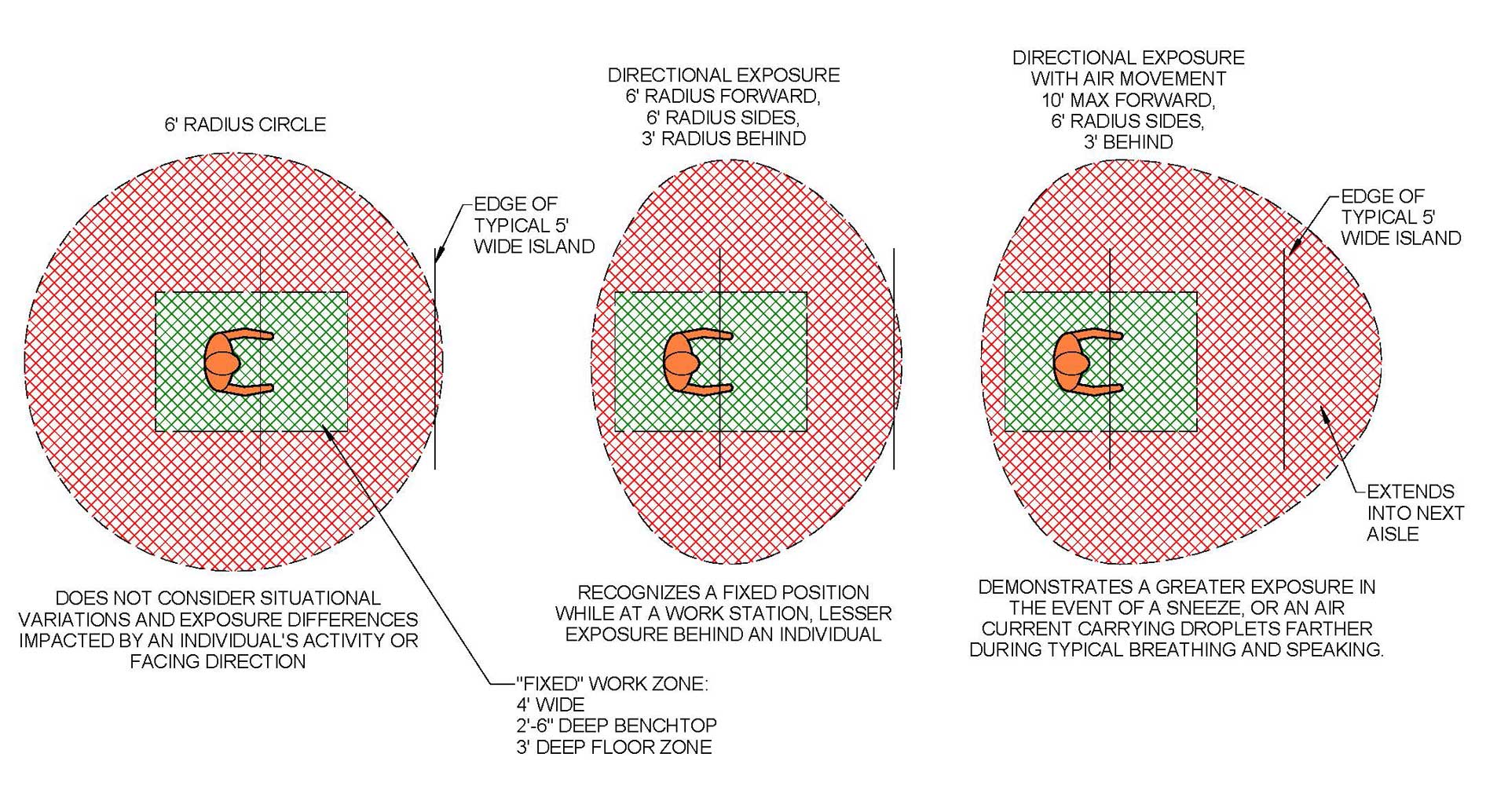HERA laboratory planners would like to take a moment to wish you health, safety and well-being during this turbulent time. As the country starts to open back up, we know our clients will also be returning to their offices – their labs. Below are a suggestions for safer laboratory work environments.
Your employees
- If feasible, perform temperature/health checks on employees prior to their entry into a building. Healthcare settings create separate triage areas for symptomatic or febrile patients to limit exposure to non-symptomatic patients and staff.
- Reserve the use of medical PPE to healthcare providers and laboratory personnel when possible. Encourage employees to wear fabric masks within the work environment. Launder, steam or iron masks frequently for cleanliness and to decrease potential viral load transmission.
- Ensure wellness breaks for staff.Overworked and stressed employees are more likely to miss steps, leading to accidents. Access to daylight and fresh air reduce fatigue. Scheduled stretch and break times can help get employees moving throughout the day for both physical movement and a mental break.
Your laboratory
- Set up directional movement so people are moving in one direction of travel. If you have the ability, have people enter through one door/lobby and exit through a separate one to help prevent cross contamination. If you have aisles, ensure they have cross connections so people can walk one direction down one aisle and the return direction in the next aisle. This flow will limit back-to-back exposure of personnel that might infringe the 6-foot diameter guideline.
- Place hand sanitizer stations adjacent to exit doors and signage suggesting the use of sanitizer after touching shared items such as knobs, printers, keyboards, etc.
- Where fire code and function allow, prop doors between communicating spaces open to limit the need to touch doorknobs. If sound is a concern, implement alternative noise reduction methods such as sound masking or white noise. Or consider installing hands-free door foot openers, auto door sensors or door openers that can be activated by elbow.
- Introduce a safety data sheet for all chemicals that includes safe use guidelines.
- Establish a scheduling protocol of shared equipment rooms to avoid overloading spaces.
- Find ways to reduce density within the lab to ensure six-foot work zones:
- Think through the minimum cohort group needed to advance your research.
- Divide your team into half or thirds to alternate running the lab and reduce density. Keep each group separate so if someone from one group gets ill, everyone quarantines and the other groups continue.
- Consider installing plexi dividers on two-sided benches.
- Limit lab access to outside PIs and others.
Your building
- Where mechanical systems can be modified, increase single pass airflow to prevent re-entry or spread of viruses from one space to another.
- Consider adding HEPA filtration.
- Review inventory of cleaning chemicals, materials and consumables to ensure inventory is aligned with needs and complies with building code and storage guidelines.
- If your building has been shut down during stay-at-home measures, complete a physical condition assessment prior to reopening to ensure there is no damage caused by vacancy. You’ll want to assess:
- Mechanical systems
- Water systems
- Conveyances
- Potable water: flush faucets
- Fire Life Safety Systems
- Open site drains and traps
- Start building systems methodically to prevent load shed from simultaneous starts. Observe them running for a bit to ensure proper operation. Consider testing CO levels around systems that may circulate air throughout buildings.
- Direct deliveries to a single location and designate a single person to retrieve.
- Ensure that all water systems and features (drinking fountains, decorative fountains, etc.) are safe to use to minimize the risk of Legionnaires’ disease and other diseases associated with water.
